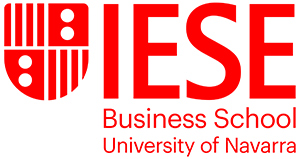For most of us, jumping to a new job produces a combination of both excitement and anxiety. That nerve-racking mix is multiplied when changing not only job functions but also sectors and countries – making what career placement professionals call the triple jump.
Such radical change is only for those who are prepared to rethink every aspect of their career: not only what they want to do, but also what industry they want to work in and what country they want to live in. It’s not easy, but it may be possible if you have a realistic and flexible plan on how to achieve it.
How can you make such a radical career change?
1. Be realistic about what it takes
You might not want to set your hopes on moving to a country where work visas are virtually impossible to secure, or in a function that requires extensive technical knowledge that you just don’t have. You also have to be aware of language limitations. If your dream is to work in China, you had better start taking Mandarin classes.
Remember that you’ll have to prove to potential employers that you’re worth the risk. “The challenge with the triple jump is proving that you have what it takes on three new fronts. Basically, demonstrating that you not only have the technical skills for your new function, but that you understand the complexities of your new industry and geography”, said Daniela Bocco, who after her MBA went from working in marketing in a U.S. construction company to being a sales product manager for Ab InBev in Mexico City.
2. Be flexible
You’ll have to show some give and take. Set your priorities and be willing to adapt to the rest. You may have to aim for a region rather than a specific country, for example, or go into a sector such as consulting which is more amenable to such a move.
Rahul Parikh was working for a boutique executive search firm in the U.S. before he did his MBA at IESE; now he’s working for food delivery platform DiDi Food Mexico. For him, his priorities were changing industry and country – but he knew it was possible that perhaps his functions would be similar. “I understood that I may not get to be as picky in terms of function area, given that industry and geography were my top two priorities,” he said (although in the end he was able to change all three).
3. Look for a structured program in a big company
Leadership or rotational programs in companies take a longer-term view of employees, and may be less focused on having very specific qualifications. “These programs are looking for future talent,” says Patrik Wallén of IESE’s Career Development Center. Competition for places in leadership programs is very tough, but they do exist in companies across industries.
4. Do the right program in the right school
You’ll most likely need to boost your knowledge and skills in order to make such a drastic change. Choose a program at a university keeping in mind that your end goal is to make a triple jump. The fact is that if you’d like to work in the U.S., doing an MBA in the U.S. is probably your best choice. If you’re looking to work internationally, a school like IESE has global companies recruiting it students. Make sure that the university you choose is a target school for the kind of company you’d like to work for.
“The program definitely helped by opening up geographies that I would not have considered and providing paths to finding a job in those locations”.Rahul Parikh. IESE MBA’20. Strategy & Operations Manager, DiDi.
While making the triple jump is not for the faint hearted, the rewards are potentially large. Lukas Mitschke left behind his life as a Munich-based consultant to become a global strategist for Samsung Electronics in South Korea – and has no regrets. “Life is an adventure, and adventure is all about learning. I believe that big changes provide a great opportunity to accelerate learning and therewith experience the magnificence life has to offer to the fullest.”
Find out how an MBA can help you make big changes in your career.

















